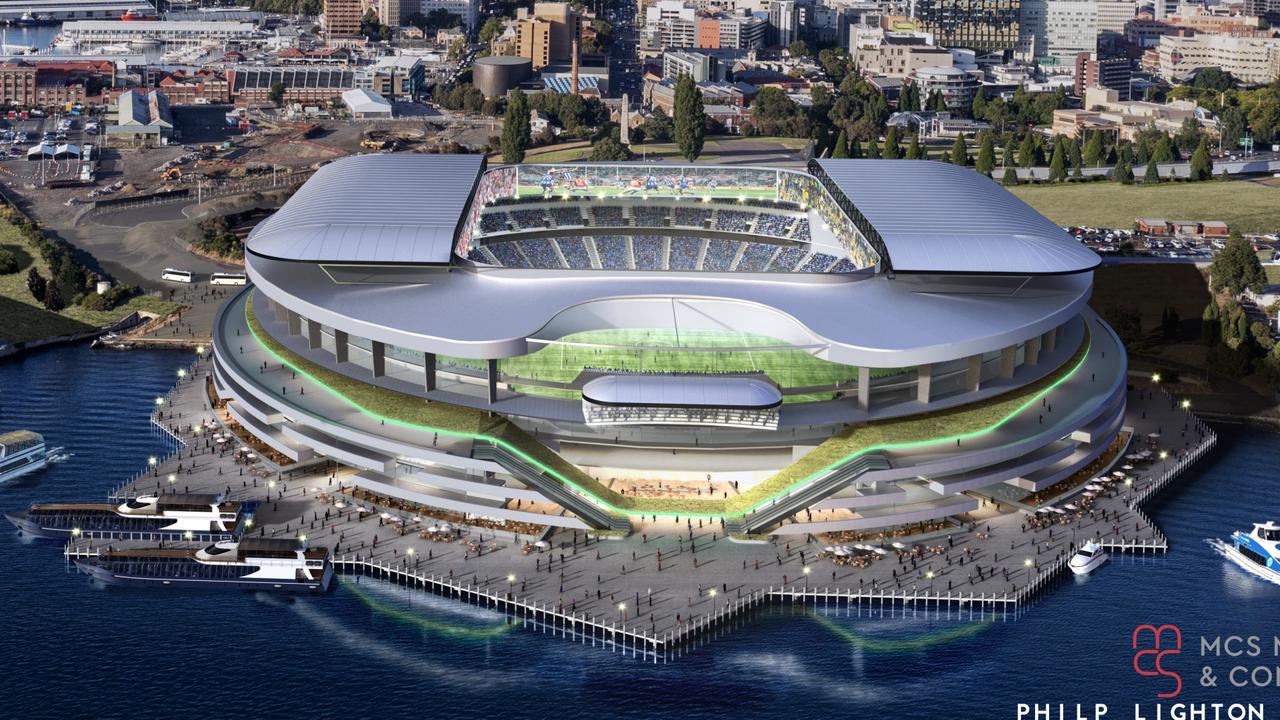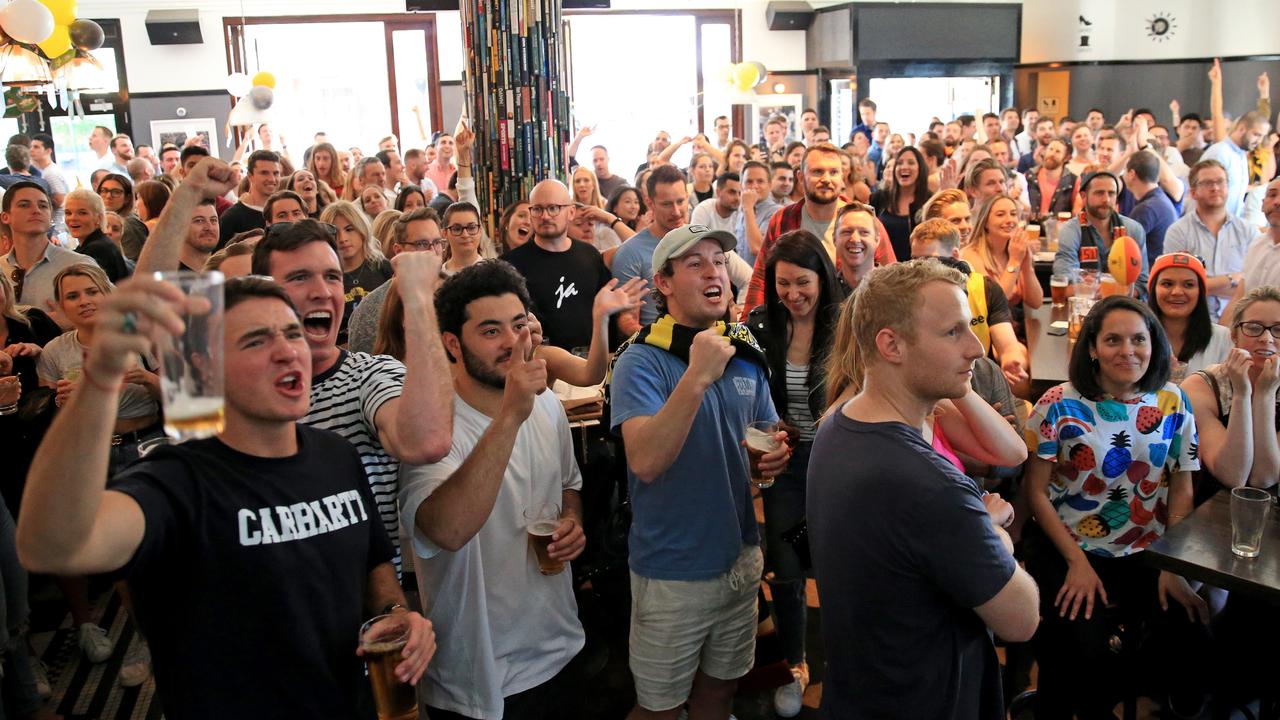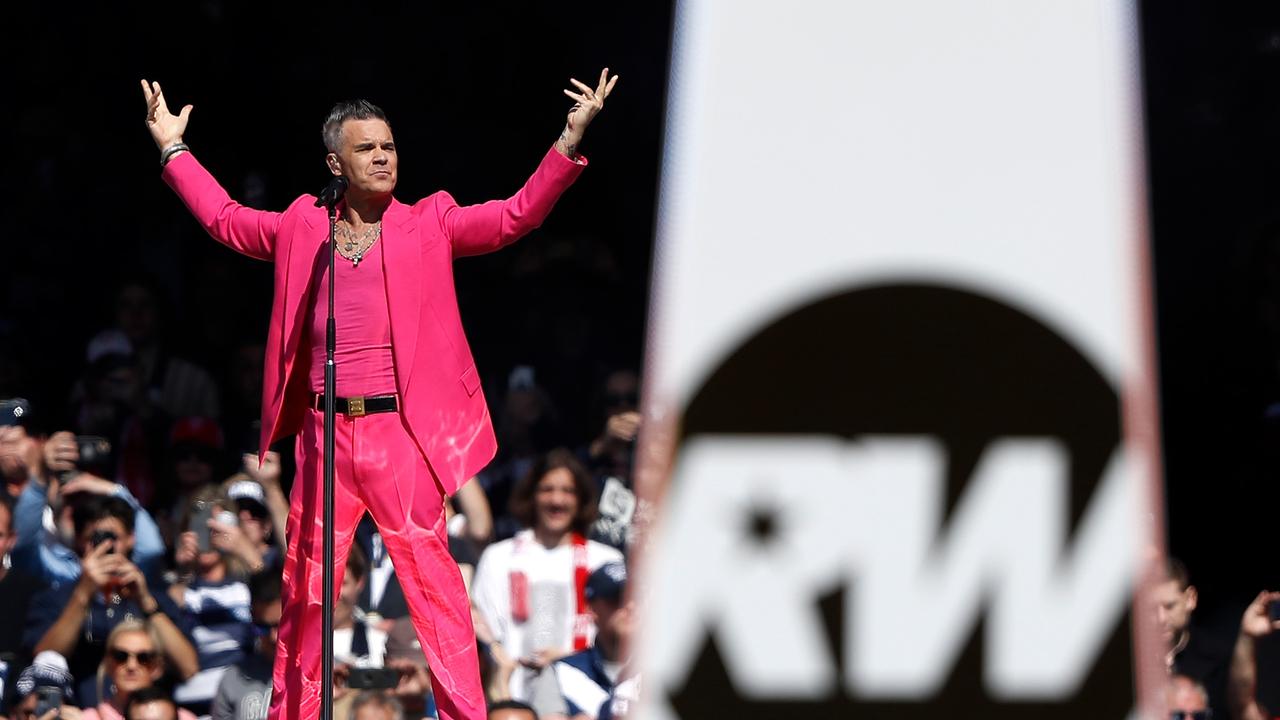How Hobart Stadium can become more than ‘bargaining chip’
A state of the art project has the potential to be more than a political football, it could change the identity of an entire town.

The proposed new state-of-the-art Hobart stadium on the city’s iconic waterfront has the potential to fundamentally change the identity of the town.
For a state like Tasmania – rich in culture, history and pride – a venue capable of hosting some of the world’s biggest attractions could do wonders for a state which often misses out.
The $750m project has been billed as a Hobart arts, entertainment and sporting precinct, but emphasis has often been placed on the latter due to the stadium’s unshakeable ties to the state’s AFL bid.

While the debate on whether Tasmania should have an AFL team comes around as often as the changing of the seasons, the current proposal has increasingly gained positive momentum, with a decision on a 19th club expected at some stage this year.
But the league has made it clear there will be no team licence without a new stadium.
The state government has already committed $375m to the stadium and hopes the other half will be funded through the federal government and private equity investment.
But until decision time arrives on whether the state will get an AFL team, it is important to separate the stadium proposal from the spectre of football and even sport itself.
The project at times has been thought a means to an end as part of a grander plan, but the venue has the potential to change how Hobart is viewed and operates.

The politics played at stadiums
Sometimes the political stoushes and debates which stem from a stadium proposal can be just as fierce as the battles waged inside them.
Due to the logistical requirements, financial backing and government support these projects require, stadiums will always be deeply political entities.
Only early this year the NSW government and NRL were engaged in a very public fight after $800m in suburban stadium funding was reneged upon due to the state’s flood crisis.
It cast doubt over whether the grand final would be played in NSW, with ARLC chairman Peter V’landys describing Premier Dominic Perrottet as someone you “don’t have a bet with” because “if you do, he won’t pay you”.

But high-profile discussions surrounding stadiums are often exclusively in the sphere of sports, with little air given to how they can benefit the community as a whole.
Sports management lecturer at Western Sydney University’s school of business, Dr Jess Richards, said not doing so excludes people and opens up projects to common criticisms.
“If they are continually painted in the light that it is a sports stadium, obviously that alienates a lot of members of the community who maybe don’t follow sport and might not see the benefit in this type of investment,” she said.
“The argument that’s often put forward in relation to not supporting stadium builds is that the money could be reallocated; it could be spent on things that are more important.
“Absolutely that’s not an issue that anyone could dispute; health systems and sectors like that are incredibly important to invest in.
“But I think if we step away from political hot-shoting and have open conversations about what the city needs, I think that most people would be very much in favour of having a stadium.”

Dr Richards said it was important for the Hobart stadium proposal to meet with relevant community groups to address any concerns they might have with the project.
“A lot of governments and a lot of community stakeholders involved in potentially proposing a stadium miss the mark,” she said.
“I feel like a lot of people get upset and it’s used as a political weapon because people aren’t talking and engaging in conversations with all members of the community.
“That’s not just your small businesses, it’s people that work for environmental groups and important Indigenous First Nations communities.
“There really needs to be more effort, I think, in relation to this stadium proposal to really invite people in from those different community groups.”
She also appreciates that some Tasmanians would feel frustrated with a long-awaited AFL license being used as a “bargaining chip” to help push the stadium through.
“It being used by the AFL as a bargaining chip, absolutely I can appreciate why that would frustrate any person from Tasmania being used in that political way,” Dr Richards said.

Driving cultural, economic and community growth
Long gone are the days when stadiums were a patch of grass with a few stands and a canteen shop. New stadiums are state-of-the-art precincts bordering on modern-day coliseums.
Their sole purpose isn’t to just be a place where events are held, but to be a cultural epicentre for the local community.
Stadiums include facilities and infrastructure which engages the public, with Dr Richards noting most new projects place “a greater emphasis on community development”.
“Stadiums aren’t developed in isolation, they’re developed in relation to what we would call a stadium precinct,” she said.
“When we think about these stadiums, we need to move beyond just thinking about it being a sport or more appropriately professional sport, and really understand that these stadiums can be used by all members of the community for all different reasons.
“Whether that be for a cultural event … a concert, religious festival or a sport game obviously. But also during the year, these stadiums also host amazing corporate facilities.”



Placing the stadium so close to Hobart’s CBD also has the potential to give the local economy a significant boost.
An economic impact assessment into the project by PricewaterhouseCoopers forecast it would generate $300m into the economy during construction and $85m each year once it was built.
After seeing what CommBank Stadium did for western Sydney, Dr Richards knows stadiums can be an “amazing asset” for local businesses, the hospitality industry and other key stakeholders.
“I think when you look at the economic injection that stadiums can have on communities, it’s kind of hard to not acknowledge that,” she said.
“Particularly for our local businesses out here in the Parramatta region, Covid had an enormous impact on their economic capacity, particularly the hospitality industry.
“What we found with having the stadium and having events nearly every weekend out here, businesses had an injection of funds.
“Put simply, people wouldn’t be out here in those numbers without having a purpose and that purpose is to go to an event at the stadium.”


Grander stadium infrastructure can also attract headline events and visitors who would have never gone to the city otherwise.
As one of Australia’s smaller major cities, Hobart often misses out on international acts or major sporting fixtures to the usual suspects like Sydney, Melbourne and Brisbane.
But the Hobart stadium plans to attract major concerts, international cricket, international rugby and NRL games – events the state has either never had or rarely experienced.
Dr Richards said by bringing these attractions in, stadiums can have a galvanising effect on a local community which helps grow pride in their city.
“I found that particularly for Commbank, it really gave Parramatta a sense of identity. That wasn’t something that I expected to happen, but people are really proud of the stadium,” she said.



“There is an element of pride that people will feel when the stadium is built and having people be attracted to your community.
“It’s not about replacing that really rich culture that Tasmania is so well known for all over the country and out in the world.
“It’s about advancing that, extending that and giving people in Tasmania an opportunity to see these main attractions.”



